1. What did the Global Food Security Statement say?
I want to start by taking a look at a little part of the recent G8 Hokkaido Toyako Summit G8 Leaders Statement on Global Food Security1:
7. We fully recognize the need for a wide range of mid- to long-term measures to tackle the issue of food security and poverty, inter alia, the importance of stimulating world food production and increasing investment in agriculture. To this end, we will:
7. (g) accelerate research and development and increase access to new agricultural technologies to boost agricultural production; we will promote science-based risk analysis including on the contribution of seed varieties developed through biotechnology;
9. (i) ensure the compatibility of policies for the sustainable production and use of biofuels with food security and accelerate development and commercialization of sustainable second-generation biofuels from non-food plant materials and inedible biomass; in this regard, we will work together with other relevant stakeholders to develop science-based benchmarks and indicators for biofuel production and use;
Firstly the underlined part of the short paragraph 7. (g) (don't ask me about the numbering system, I don't understand it either) has a number of problems. I do not want to go into it very deeply, except to say that I think it is supposed to convey the message, "We are going to do a risk analysis on the use of GE (GM) crops," without the slightest intention of actually doing so. In fact, the clause is so garbled it is hard to see what is meant at all, and perhaps the only thing we can really get from it is that there is an intention to push GE crops. Please feel free to comment if you think you can come up with a more comprehensible interpretation of this paragraph.
Paragraph 9. (i) is much more complex. Firstly, there is a bow in the direction of the food security problems that have been occurring; rising prices of grains, possibly because the use of maize and soybeans for the production of biofuel (essentially bioethanol or biodiesel) in the USA has driven up the prices of those grains. Just exactly why the prices of grains are rising is not clear, and the situation is complex; rising crude oil prices (which are driving the biofuel boom), low world stocks of grain, reduced production due to adverse weather conditions in some countries, people in developing countries eating more animal protein, grain speculation, and so on.
Then it appears that development and commercialization of sustainable second-generation biofuels from non-food plant materials and inedible biomass is to be accelerated. "Development and commercialization" means that large corporations are going to be involved, and in the context of paragraph 7. (g) this must mean GE crops for biofuels. In fact, it has already started, and in addition it might not be unfair to say that most GE food crops that have come onto the market thus far function just as well as biofuel crops as they do for human food crops. "Sustainable" is really not appropriate here, and I will explain why later. "Second-generation biofuels from non-food plant materials and inedible biomass" refers to the ability to process cellulosic plant materials into ethanol, not a whole new and different biofuel. The idea is to use the non-food part of the plant - leaves, stem, and so on - for the biofuel, while using the food part, the grain, for food. This may, and probably will, involve genetic engineering of the plant to make it in some way more favourable for ethanol production, e.g. by trying to raise the total amount of biomass produced per plant, raising the proportion of cellulose in the plant, and so on. That is the "inedible biomass" part. Just exactly what is meant by "non-food plant materials" is uncertain. It could refer to non-food, specialist biofuel crops, or it could refer to any kind of plant cellulosic material, such as wood. In fact a bioethanol plant started up in Osaka in January 2007 making ethanol from construction waste materials using a GE bacillus coli to break down the cellulose2.
Finally, we have "we will work together with other relevant stakeholders to develop science-based benchmarks and indicators for biofuel production and use." "Other relevant stakeholders" are presumably corporations. "Develop science-based benchmarks and indicators for biofuel production and use" means a legal regulatory framework for the production (i.e. with GE crops) and use of biofuels. "Other relevant stakeholders" does not mean you and me. We do not need to "develop science-based benchmarks and indicators for biofuel production and use," as I shall explain below.
2. What are they trying to do and what are the problems?
What can we learn from this reading between the lines? I think the main messages are this:
a) Bioethanol, and to an extent biodiesel, is here to stay and will be an important energy source in the future energy mix,
b) GE crops for food and bioethanol are strongly linked,
c) Crops for biofuel, in the US at least, will continue to be staple grains, maize and soybeans, grown on good cropland,
d) Big corporations are going to do it; you are not a "relevant stakeholder".
There are several problems with this:
i) This method of producing bioethanol/biodiesel probably uses more energy than the resulting ethanol contains.
ii) This will take place on the best cropland regardless of the effects on the poorer sections of the world's population OR the viability of the soil, our most crucial resource base.
iii) The monopolisation of food through the monopolisation of seeds will be expanded to and linked to the production of fuel.
Let's take them in order. i) There is a debate raging over this, but I'll spare you the details3. It is sometimes quite reasonably said that when we are eating the produce of modern, energy-intensive, chemical-mechanical, industrial food, then we are "eating oil." That's fairly accurate, since at least 10 energy units of fossil energy resources are needed to put one energy unit of food on your plate. The nitrogen fertilizers that are used to grow the crop probably derive from natural gas, but the statement about "eating oil" is, by and large, correct. Probably 2.5 to 3 of the more than ten units of energy are used on the farm in the direct production of the crops. The interesting thing is that what we do next is take those harvested food crops and process them into ethanol, using more energy along the way. Even with just this very simple explanation, it already looks like the energy in the alcohol produced this way is going to be less than the energy used to produce it. However, energy assessments of this nature are notoriously hard to do, and depend on the assumptions made about the farming method and the crop processing method, what to count and how to caount it, and so on. Pimentel's papers generally claim a net energy profit ratio (EPR) of roughly 0.7 to 0.77, while others claim an EPR of roughly 1.2 to 1.4 4.
Even the EPR of 1.4 is not really all that wonderful. The EPR of crude oil is at least 10, depending on the kind of extraction, the quality of the oil and so on. Why go to all that much trouble when you can just use the oil or natural gas as the energy source? Come to think of it, if oil and natural gas (oil/NG) are necessary to produce the ethanol, then what's the point, since one of the main reasons for using bioethanol in the first place was to create an alternative to fossil energy resources and to start to reduce dependency on fossil energy as early as possible? The conventional methods of producing bioethanol do neither. All that is being done is the conversion of oil/NG into ethanol on a roughly 1:1 energetic basis. In terms of energetics, this is plainly nonsense, even if it does make a profit when government subsidies are available, for instance. So why do we do it, apart from trying to make a fast buck, and are there not better ways of doing it? I will deal with these questions below.
Let's move on to ii) This will take place on the best cropland regardless of the effects on the poorer sections of the world's population OR the viability of the soil, our most crucial resource base. When the use of "inedible biomass"5, cellulosic materials such as leaves and stems (called "stover" in the case of maize) comes into use, there will be more plant material available from each hectare of crop, and the EPR may rise, but since there is no by-product from the ethanol-producing process that could be used as a fertilizer, no plant material would be available for returning to the soil, and the use of chemical fertilizers will be necessary unless the crop is grown 'organically'. (By the way, you probably noticed from the mention of a plant making ethanol from construction waste materials above that the processing of cellulosic materials is already possible. In this case a by-product of lignin pellets, a biomass fuel which is used to fire the boilers in the plant and also sold as a fuel, is being made.)
Modern maize growing methods are not good for the soil anyway, but becoming unable to return the stover to the soil, and thereby becoming reliant on chemical fertilizers for fertility is a quick way to ruin the soil. Once crude oil/NG become really scarce and expensive, perhaps in a few years' time, then there will be little option but to farm organically. There are alleviating measures, such as not taking ALL the stover for alcohol conversion, or rotations with soybeans and other crops, but this alone will not resolve the problem of dependence on oil/NG to grow the crops6. Organically grown crops, by definition not using petrochemically-derived fertilizers, herbicides and pesticides, will do the job, but for example, in the case of the USA, I find it hard to imagine organic farming on the scale of Mid-Western maize fields. Unless, perhaps, even after crude oil/NG are unavailable, traction can still be provided - using bioethanol to fuel tractors, harvesters, trucks, and so on. This will make farming without oil/NG possible, without having to rely on farm animals for traction7. But there are some agricultural processes that require electricity; irrigation, post-harvest drying and processing of crops and processing of feedstock crop material to produce ethanol. Where will that come from? You may have noticed that in mid-July Al Gore made a proposal for 100% of USA electricity to be produced from renewable energy sources (PV, wind, hydro, geothermal and so on, and he did NOT specifically mention nuclear energy, so please check it out for yourself at the URL given in the note if you are suspicious about this) within ten years8. Now we begin to see what the USA and other countries may be planning over the mid-term, approximately the next five to thirty years.
As this scenario unfolds, as I think it will in the years to come, and countries like the USA become unable to export basic grains for food because of biofuel/biodiesel production, what considerations will the countries who implement this weaning of themselves from oil/NG have for food-importing countries which are now experiencing problems with the rising prices of basic grains? None, probably. Exports of any basic and/or essential commodity are carried out on the basis of a surplus over domestic needs. If there is no surplus, there is generally no export. It does not matter what the commodity is; food, crude oil, cotton, timber, you will not ask your fellow citizens to suffer in order to feed, fuel, clothe, or house people in another country or another continent. I do not think asking the WTO to ensure that grain exporting countries continue to supply grain to importers is going to be of much use. If there is an energy crisis, will you be able to ship it to them anyway? The global economy is cooling off and winding down. Who knows how far it will go? Countries like Japan, and many Middle East and African countries, will simply be "off the map", left to fend for themselves.
3. Where is all this heading?
Now let's see how this ties in with iii) The monopolisation of food through the monopolisation of seeds will be expanded to and linked to the production of fuel. Actually, here I need to quote one more sentence from the G8 Hokkaido Toyako Summit G8 Leaders Statement on Global Food Security:
6. Food security also requires a robust world market and trade system for food and agriculture.
This is an interesting statement. It reveals just about how far humanity has come down the road to stupidity. If we look at this from the point of view of Japan, the statement may be true. Japan was about 80% self-sufficient in food in 1960. That means that if there had been a sudden cessation of food imports Japan could have probably survived without starvation, just as Cuba did in the mid-1990s. Since the 1950s, the USA had been cajoling Japan into importing large amounts of its agricultural surplus, maize, soybeans and wheat, thereby bringing about a substantial diet change in Japan towards an increased intake of bread, pasta, processed foods and animal protein, and away from rice and other traditional foods. The mood in the 1960s, the "era of high economic growth" in Japan, was that it would be possible to import nearly all raw materials, including large amounts of food, and get rich by manufacturing and exporting industrial goods. Export earnings would easily cover the import of basic essentials, such as food. With a few minor hiccups (oil crises and adverse growing weather either in Japan, USA or elsewhere) the system has worked well for about 40+ years, but very few people at the Japanese end have ever given much thought as to how long the system could continue before collapsing under multiple crises caused by the depletion of fossil energy resources, rising world population and so on. It seems that we are now fast approaching the crunch point.
It is, of course, possible for people to grow food for local consumption without the need for 'a robust world market and trade system for food and agriculture,' but not if you live in a large city much over about 250,000 people (people in cities smaller than this in Japan are generally within walking distance of agricultural land) or if you live in a food-importing country which does not have enough agricultural land to support its population. Japan's population in 1960, for instance was just under 93.5 million and food self-sufficiency was around 80%. Japan's population peaked in 2004 at 127,777,777 people (Really? It's my little 'joke', but quite accurate and easy to remember)9 and the food self-sufficiency is now 39%. Many Middle East and African countries may be in a similar situation (though their populations may be rising rapidly, and not declining). Undoubtedly, these countries are now dependent on the world trading system for food (or like the Democratic People's Republic of Korea [DPRK - North Korea] face starvation), but will somehow have to find the means to pay for the imports, including transport, despite the high prices and decreasing availability of oil/NG and probably coal as well. These countries will clearly also not have the luxury of using their cropland for the production of biofuels. Effectively, they have 'allowed' their populations to rise beyond what their cropland endowment could support. In Japan, there has been no public debate on this issue. In my experience, the general public has very little knowledge about cropland areas and population, although recently many people seem to know the 39% figure for food self-sufficiency.
This looks like a real recipe for disaster; a substantial 'dieback' of population due to starvation, as has occurred to a certain extent in the DPRK. What solutions could there be? a. Humane, natural, but controlled population reduction by reducing the birth rate through the expanded use of contraception and so on (instead of a population crash by starvation). I think this will either take too long, or will be impossible to implement due to cultural or legal enforcement problems. Under current population scenarios, Japan's population is due to fall to between 90 million to 100 million by 2050. Is it possible that this could be speeded up so that Japan could be effectively 100% self-sufficient in food by, say, 2030? I doubt it. One only need recall the experiences in India and China ("Having one child is good") to see how effective these policies are in actually reducing the population. On the other hand, negative population growth, abhorred by governments including Japan's, does exist, but mostly in advanced industrial countries which have high degrees of food self-sufficiency (France, Germany, UK, Australia and so on).
b. Expand the cropland horizon. Almost unthinkable. In Japan, there is a case for a certain amount of rehabilitation of former cropland, from golf courses and so on, but not a lot. The roughly 4.7 million hectares (m ha) of cropland in Japan now, could perhaps be increased to 5 m ha. The cropping ratio (number of crops grown on a certain plot of land per year) is currently around 95% (meaning that not all available cropland is being used) but in the 1950s the average over the whole of Japan was around 135%, and where I live was 160% in 1960. So at 5 m ha x 135% = 6.75 m ha. If 10 people are fed on one ha, then theoretically 67.5 million people could be fed. If you calculate the number of people that could be fed at 80% self-sufficiency and a population of 93.5 million (the situation in Japan in 1960), you get about 75 million people. Call it 70 million. That's 55% of the current population. What are the other 45% supposed to do? No one knows. Even in 2050 this will still be at least 20 million people 'too many', if the statistics still hold in 50 years time. I suspect that, given desertification, decreasing availability of water, population rise, and so on, many Middle East and African countries are in roughly the same situation. The 'AIDS epidemic' is thought to be resulting in declining population in some African countries, but who really knows?
c. Increasing land productivity of crops. The 'Green Revolution' in staple grain agriculture since the Second World War has resulted in a roughly 50-year interval during which the increase in unit area yields of the main staple grains, wheat, rice, maize and soybeans rose faster than the world population. This was at the expense of 'modernising' agriculture - really 'industrialising' agriculture through the use of fossil energy resources to mechanize, chemicalize and electrify agricultural (food) production. But by the early 2000s the 'Green Revolution' was losing effectiveness, and by 2008, although yields are still rising by possibly 1.5% per year (3% per year in the 1960s), the world appears to be slipping back down in terms of grain production per person. This is, however, not the place to go into the 'meanings' and ramifications of the 'Green Revolution', which has been adequately dealt with elsewhere10.
A few days ago, my mother-in-law showed me the front page of the well-known Asahi Newspaper for Sunday July 20, 2008. The top article, about a quarter of the front page, and then spilling over to even more on page two, was about GE crops and food. The headline was "Tilt towards GE" and was part of a series called "Environment Year Zero". (Everything is in Japanese. These are my translations, including below.) So apparently 2008 is the year we start thinking about the environment in Japan. That was 'news'. The article is reasonably balanced, but a little bit 'tilted' towards the possible future promise held out by the developers of GE crop plants. In one part, the article states. "By 2030, seeds of three of the main agricultural items, maize, soybeans and cotton, will be developed such that yields of these crops will double in comparison to those of 2000, and the amounts of land, water and fuel needed to cultivate the crops will be decreased by one third." Monsanto CEO Hugh Grant is quoted as saying, "We must fill the increasing demand for grain while protecting the environment. We will play this role." The GE seed developing corporations are notorious for their statements on "feeding the world," but most of the readers of the Asahi Newspaper do not know this.
What's the betting on the "By 2030..." statement above being realized? And at what 'price'?
It would be 'nice' to think it could be possible, but the seed companies face opposition to their patented seeds on three grounds. The first is that foods produced from GE crops may be hazardous to human health. Despite industry claims to the contrary, humanity does not understand genetics sufficiently well to guarantee the safety of GE plants and foods. At the very least, the protein content of the GE produce will be different to conventional (non-GE) produce, and the presence of novel protiens increases the risk of allergenicity for some people. Other unpredictable changes in the genome of GE plants may occur as a result of the genetic engineering process, and the spread of antibiotic resistance due to the vectors used in the GE process will continue as long as the antibiotic markers are used. Effectively, the fact that immense amounts of GE foods now being consumed by unwitting consumers (because their countries will not enforce a strict labelling system) is tantamount to a monstrous live experiment on the human race. Do we want to continue with this?
Secondly, the massive introduction of GE crops, already happening in the USA, Canada, Argentina and Brazil, will cause biodiversity to decrease. It will drive out traditional and conventional varieties, leaving mankind very vulnerably dependent on a much smaller number of GE varieties, which will almost inevitably have more unstable genomes than their traditional and conventional ancestors. This kind of biological and ecological instability is something we would be insane to walk into with our eyes open.
Thirdly, there is the problem of the monopolisation of seeds, and therefore the monopolisation of the world's food supply in the hands of a very few multinational companies. Imagine that you could control food on a global scale. I do not think I have to spell it out for you.
4. What's all this fuss about "second-generation biofuels"?
I think the part in the G8 Leaders Statement on Global Food Security that says, "accelerate development and commercialization of sustainable second-generation biofuels from non-food plant materials and inedible biomass," despite the fact that the technology is already developed and established enough for full-scale commercial plants to be starting up recently, means that "we are not going to start the really serious part of the changeover from the fossil energy resource economy to the biofuel economy until the biofuel GE crops that are now being developed are ready to go in the fields."
The explanation of why that is and what it means is the subject of the remaining part of this article.
I do not think there's much doubt that the greatest problem with GE crops is the third one, the monopolisation of the food supply through patented seeds. The purveyors of the seeds ought to be betting that the first and second issues are really not all that serious, since it may well be themselves and their descendants who have to live with the problems along with all the rest of us. However, the promise of global control, which now seems to be within their reach as country after country, region after region succumbs to GE crops and food, completely overrides the first two issues.
If you want to get an idea of how the corporations get a toehold on a country, the first is through the media, as in the example of the Asahi Newspaper given above. It's not hard to find farmers and journalists who will push the GE agenda. The second is through the contracts and patent system. The GE seed company owns the seeds. The farmer cannot replant the seed from this year's harvest the following year; a new batch of seed must be bought. The farmer signs a contract with the company, giving the company many rights over the farmer's agricultural practices and bookkeeping. If GE seed from a neighbouring farmer's field finds its way onto your field, and if the company investigators find the GE plant growing there, you will be in violation of the patent and liable to litigation11. Contrary to what the companies and GE proponents claim, there is no co-existence with conventional, organic, or any other kind of agriculture. Once its in your area, it's just a matter of time. Neither do these people give a hoot about global food security. If their "feed the world" statements turn out not to be true in twenty years' time, who is going to hold them responsible for it? How about you?
Farmers will have no say, no control, over what they do or how they do it. Any farmer that does not toe the line will not be renewing the seed contract the following year. The same will also be true for biofuel crops. They will all be GE crops, the companies will control the farming, the processing and the distribution of the biofuel. What is more, and possibly crucial, opposition to GE food will be impossible because we will be told that without GE crops there will be no biofuel for transport, farm machinery, construction equipment, domestic heating (including water heating), and so on. Food and biofuel crops may be identical and growing in the same field, one part for human food and other parts for biofuel. If you want fuel, you must eat the food. You do not want to go back to living in the Middle Ages, do you?
How do I know this? Ethanol is not a new "product". Humans have been fermenting stuff to get drunk on for millennia. We just did not have cars to run it on. Almost every Japanese person with a brain has heard of the Ford "Model T". What they do not know is that it was designed to run on both gasoline and ethanol. Apparently, Henry Ford was more in favour of ethanol than gasoline, but ethanol was pushed out of the market by the Prohibition, partly funded and supported by John D. Rockefeller. Another fact people do not know is that the Model T had a 'spark advance lever' just behind the steering wheel, roughly where the windscreen wiper lever is on many cars now. When running the car on ethanol, or simply when accelerating, the ignition timing could be advanced, as ethanol needs advanced ignition timing compared with when running the car on gasoline. The later Ford "Model A" had a 'knob' just below and to the right of the dashboard that you could pull or push to retract or insert the needle in the carburettor's jet. Running a car on ethanol requires a slightly larger aperture jet. There are photographs of these features of the Models T and A in David Blume's book "Alcohol Can Be a Gas!" (p.12 and 430)
The Ford Models T and A were the first FFVs - Flexible-Fuel Vehicles, cars that can run on any mixture of ethanol and gasoline from 100%:0% to 0%:100%. Interestingly, Blume says that there are about 6 million FFVs on the road in the USA now, but most of the people who are driving them do not know they own one, and most of the dealers do not know they are selling them! (p.429) Blume's book is a revelation; over 500 pages of detailed information on all aspects of ethanol and other fuels. Blume is what we would call in Japan a true "ethanol otaku" - an ethanol maniac, but more, someone who has invested a huge part of her/his life in finding out about and gaining expertise in one particular subject. A living ethanol encyclopaedia. Even if your car is not an FFV, it can be converted for ethanol use fairly easily by a car mechanic who knows what s/he is doing. But then the car will not run on gasoline unless you convert it back again. The main point about conversion to ethanol for recent cars is the alteration of the fuel injection system. Blume's book gives details.
But Blume's book is not just about converting your car to run on ethanol. It contains information on sources of ethanol (crop plants, waste products, and so on, including cellulosic materials), how to ferment them and how to distil the ethanol. You, or a small group of you and your friends can start to do all of this for a few $1000s (a few 100,000s yen) provided someone in your group knows how to look at David Blume's book and set up the fermentation and distillation equipment. Then it would be handy if one of your friends is a fairly competent car mechanic, and another one a lawyer. But the G8 and their corporate friends do not want you to know about this or to read this subversive material! If you've bought or read "Alcohol Can Be a Gas!", please comment. I bet I get very few such comments! I heard about it on a certain Internet podcast, not through the regular mass media.
So what's going on? The main reason, it appears, that the cultivation of biofuel crops suddenly increased in the USA a few years ago was because of the rise in gasoline, i.e. crude oil, prices. Just exactly why crude oil prices are rising is hotly contested. I believe it is happening because the peak of annual world extraction of crude oil has been reached; the so-called "peak oil". However US$140 a barrel looks too high to have been caused by "peak oil," (Andrew McKillop says crude oil's real equivalent price of the early 1980s, corrected for competing asset prices and the US dollar's world value is probably around 175 USD/bbl) so there are other factors involved. Speculation, manipulation by oil companies for higher profits, manipulation by other powerful groups for their own reasons, and so on. It also appears that the increased use of maize for biofuel production has driven up the price of maize and other basic grains, but again the situation is more opaque than that, speculation and other manipulation being blamed for at least some of the price rise. What certainly has happened is that biofuel is now a dirty word. Almost everyone is happy to see that the EU, the UN, the World Bank and the G8 is talking about food security in the context of biofuels since the food riots started to occur in April this year. Just see your friends' faces crease up in disgust when you mention 'biofuels'.
So, the situation now is that far fewer people are interested in knowing that biofuel crops do not have to be maize or sugar cane or soybeans, do not have to be grown on prime cropland, do not have to be GE crops, that they can be grown on marginal land, in sewerage swamps, as one part of a viable rotation, gathered from the sea (seaweed and so on), can be processed, fermented and distilled as a small local enterprise and do not have to be (and are perhaps better off not being) converted to fuel by large transnational corporations. David Blume shows quite convincingly that as long as we do not fixate on biofuel from edible crops grown on prime cropland using 'modern' energy-intensive agricultural methods, and do not allow big business to control everything from the field to the end-user, then we will not have a problem fuelling basic necessities for a fairly good lifestyle..
You don't believe me? A few examples:
Cattails: Blume gives the example that 15 ha of cattails (Typha sp.) can treat 20 million litres of secondary sewage a day. It is possible to produce a total of over 90,000 litres of ethanol per ha from the rhizome by ordinary fermentation and the leaves and stem by cellulosic processing. To get an idea of how productive this is, Blume asks us to suppose that 2580 ha of cattail ponds be used to treat the sewage for each US county (there are 3141 counties in the US). That would result in over 750 billion litres of alcohol. The US annual gasoline consumption is about 540 billion litres12. (p.127) Energy needs to be used in the processing of the cattail rhizome, leaves and stem. This can be supplied by wood, providing forests are managed sustainably. Quite appropriately, some communities will not want to harvest cattails grown as part of the sewerage system as they will want to return the sewerage (human wastes) to the land.
Kelp: Could produce close to 340 billion litres of bioethanol a year just from the coast of California. (p.159)
Castor beans: Jatropha curcas L. I have some personal experience with this. The photograph in Blume's book (p.125) does not look like the same plant, but the description fits. It is a low tree, two to three metres in height. The fruit looks like a black plum, and it contains a nut that is 33-35% oil. The nut can be chopped, dried, pressed and filtered to give a diesel fuel. No processing, no machinery, except for the end-use diesel engine. Incredibly low-tech. Planting 1250 Jatropha trees/ha, gives 10,000 kg of nut per harvest, 4 kg gives 1 litre of diesel oil, so 2500 litres are harvested per ha for each harvest. However, the tree is often planted as a hedgerow around fields or gardens, or along roadsides, taking up zero cropland.
Feel better now?
5. Defining the broad strategic horizons
The role of the G8 has always been to define the broad strategic horizons through which the next wave of planetary capital accumulation can occur13.
So what is so subversive about all this? The feature of Blume's vision of biofuels, especially, bioethanol, is of course its decentralized and democratized vision of energy production. G8 leaders have a problem with this? According to the authors of The 2008 G8 on Hokkaido, a Strategic Assessment:
It is critical to bear in mind that the ultimate aim of their (G8) policies is never to create community but to introduce and maintain divisions that set common people at each other's throats. The neoliberal project, which has been their main instrument for doing so for the last three decades, is premised on a constant effort either to uproot or destroy any communal or democratic system whereby ordinary people govern their own affairs or maintain common resources for the common good...13
Blume's vision represents a real alternative to corporate-monopolised energy provision; and therein lies its greatest sin:
Alternatives shatter the sense of inevitability, that the system must, necessarily, be patched together in the same form; this is why it becomes an absolute imperative of global governance that even small viable experiments in other ways of organizing communities be wiped out, or, if that is not possible, that no one knows about them... If nothing else, this explains the extraordinary importance attached to the security services and preemption of popular struggle. Commoning, where it already exists, must be made invisible. Alternatives... must be made to disappear, if not squelched or destroyed, then marginalized to the point they seem irrelevant, ridiculous13.
For me, that just about sums up where we are going, but I want to make a few more comments.
1) With the global food and fuel situation stitched up as described above, I think the abolition of cash and introduction of electronic money only will provide sufficient control of the global population for microchipping of the population to be not even necessary. The replacement for the US dollar, the amero, thought to be the new currency for the upcoming 'North American Union' of Canada, USA and Mexico will perhaps be the first electronic-only money?14
2) For the last few centuries the global game has been 'growth'. Now that the end of cheap and geographically/geopolitically easily available fossil energy resources is in sight, and for many reasons 'growth' appears to have outlived its usefulness, the new game is now 'world population control'.
3) Remember the 'new ice-age' scares of the 1970s? Nevertheless, climate change appears to be really happening and possibly cannot be stopped. Are the people who attribute climate change to sunspot activity and not CO2 or CH4 and other greenhouse gasses wrong? They might not be. And anyway what better way to "fight" global warming/climate change than to be able to control the fuels and to be relying on the most carbon neutral fuels, bioethanol/biodiesel, for liquid fuel, and 'renewables' for electricity. (There's always wood/charcoal for some other uses.) Draw your own conclusions.
4) There has been a green debate on 'crash or soft-landing'. Interestingly, the above scenario appears not to be on the 'crash - soft-landing' spectrum, but something quite different. Population control, while maintaining the infrastructure for the elite, fuelled with biofuels and kept in place with electronic money. Microchipping being the 'final solution'. Neo-feudalism. Population crashes may occur in some areas that are irrelevant to the elites' needs.
5) Some have suggested that high energy prices cause increases in transportation costs15, offsetting lower labour costs in other countries (one of the main reasons for globalization), and that therefore the globalization project is on its knees and about to collapse before our very eyes. I think not. The answer is to use labour where the production is most convenient, but reduce the labour costs there. This agenda will do exactly that.
6) What to do as we approach the fork in the road to a feudal agrisystem or self-sustainable communities? Many are pointing out that those who have the power are troubled by the prospect of MASSIVE disobedience by the populace. Why bother with all this control if it were not so? However, as the man from Kentucky said, "You can't get there from here." What do you think? Is it still possible that large numbers of us will stand up and resist corporate rule, or are we already down for the count?
Notes:
1. See the Statements
2. See information, unfortunately in Japanese only, on the plant. Several similar plants are being built or are just starting up in different locations in the world. The technology has now become fairly well established and high energy prices are making the process economically viable. Note that the costs of the feedstocks for these processes do not necessarily rise as food prices rise and that they often produce their own process energy, so the cost of producing the ethanol is not necessarily linked to oil prices.
3. For a review of biofuel production energy balances, please see the two files attached below. The pdf file is a fairly short review, about 12 pages including the tables and references, and the Excel file is the data from the papers reviewed all converted into (unified) metric system units in order to make comparisons a bit easier. The Excel file shows the conversion factors and how everything was calculated. Please leave a comment to this article if you see any mistakes and so on. Thank you.
4. Pimentel, David, Ethanol Fuels: Energy Balance, Economics, and Environmental Impacts are Negative, 2003.
Pimentel, David and Tad W. Patzek, Ethanol Production Using Corn, Switchgrass, and Wood; Biodiesel Production Using Soybean and Sunflower, 2005.
Lorenz, David and David Morris, How Much Energy Does It Take to Make a Gallon of Ethanol? August 1995.
Shapouri, Hosein, James A. Duffield and Michael S. Graboski, Estimating the Net Energy Balance of Corn Ethanol, 1995.
Shapouri, Hosein, James A. Duffield, Andrew McAloon and Michael Wang, The 2001 Net Energy Balance of Corn-Ethanol, 2004.
EPR is energy obtained divided by energy used to obtain the energy. 1 means that the energy obtained was equal to the energy used to obtain it, so there is no net energy gain. Below 1 means that less energy was gained than the energy used to obtain it, net energy loss, and above 1 means that there was a net energy gain.
5. Lignocellulose, the structural material that comprises much of the mass of plants, is composed mainly of cellulose, hemicellulose and lignin.
6. For a much more thorough discussion of the problems of the current
bioethanol system, see Alice Friedmann, Peak Soil
7. "In mechanical terms, matching the 1985 power of American tractors with horses would require building up their stock to at least 250 million, 10 times the record total of the 1910s. Some 300 106 ha, twice the total U.S. arable land, would be needed to feed the animals." Smil, V., General Energetics, John Wiley and Sons, 1991, pp.233-234.
8. See a video of the entire speech by Al Gore, about 27 minutes.
9. Information in English on Japanese population available at the website of the National Institute of Population and Social Security Research. Especially, see page 1 of the huge (22MB) pdf file "Population Statistics of Japan, 2006"
10. For information on grain productivity, see the Japanese "World Food Situation and Japan's Food Security". For a critique of the Green Revolution, see, e.g. Siva, Vandana, The Violence of the Green Revolution, Zed Books, 1991. This wiki page on the Green Revolution is interesting and provides more references.
11. For information on litigation against farmers, see: Center for Food Safety, Monsanto vs. U.S. Farmers for a full pdf file, and the experience of Percy Schmeiser or just enter the keywords "Percy Schmeiser" into any search engine.
12. The Energy Information Administration gives U.S. motor gasoline consumption as 390 million gallons per day in 2007. Multiply by 3.7854 to convert gallons to litres and then 365 to give the value for one year results in 539 billion litres.
13. This intereting but quite long document, The 2008 G8 on Hokkaido, a Strategic Assessment is well worth the read for one perspective on what is going on.
14. See, e.g. North American Union for background on this issue.
15. See Elfael's Another World is Inevitable, But...

 One impact of Georgia's nose-thumbing Russia has been for the US and Europe to take a step backwards, away from it. This leaves Georgia, not only vulnerable to a Russian take-over, but it also frees Georgia to succumb to Russia.
One impact of Georgia's nose-thumbing Russia has been for the US and Europe to take a step backwards, away from it. This leaves Georgia, not only vulnerable to a Russian take-over, but it also frees Georgia to succumb to Russia.

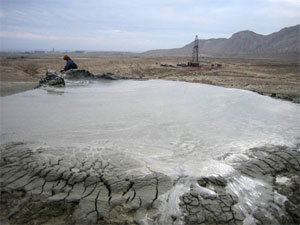


 Ageist ABC
Ageist ABC 




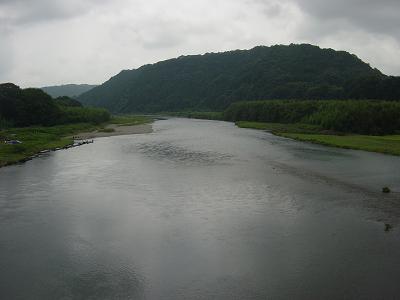





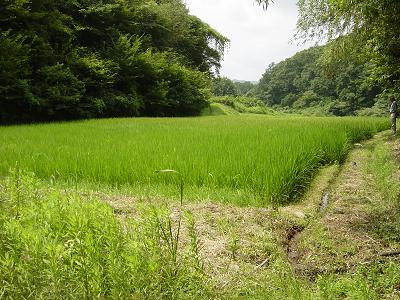




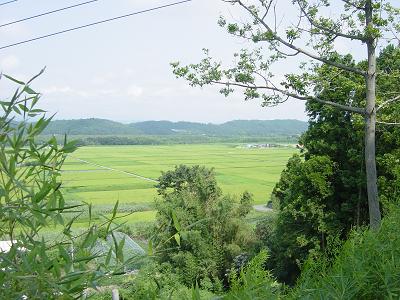
 WASHINGTON (August 13, 2008) ? The findings of a new study indicate that future levels of immigration will have a significant impact on efforts to reduce global CO2 emissions. Immigration to the United States significantly increases world-wide CO2 emissions because it transfers population from lower-polluting parts of the world to the United States, which is a higher-polluting country.
WASHINGTON (August 13, 2008) ? The findings of a new study indicate that future levels of immigration will have a significant impact on efforts to reduce global CO2 emissions. Immigration to the United States significantly increases world-wide CO2 emissions because it transfers population from lower-polluting parts of the world to the United States, which is a higher-polluting country. 
 Volunteers cleaning victims of worm and market-logic
Volunteers cleaning victims of worm and market-logic

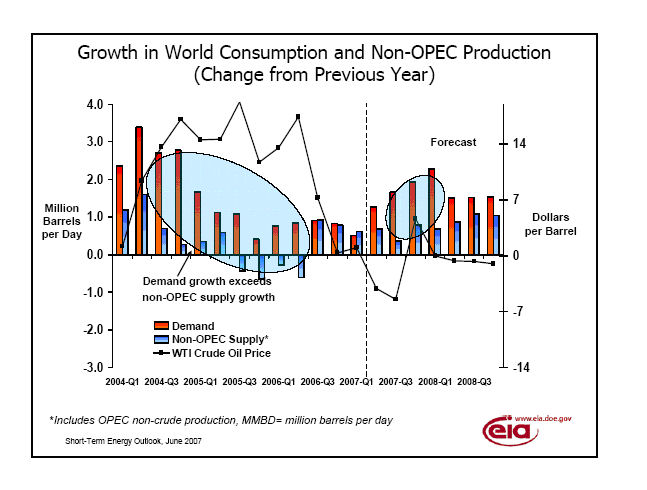
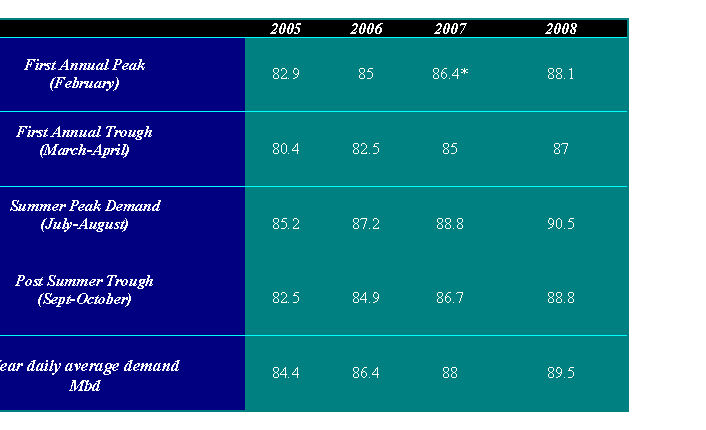
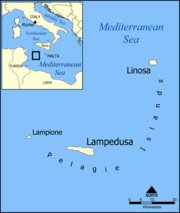


 Submitted by Tim Murray, Director Immigration Watch Canada
Submitted by Tim Murray, Director Immigration Watch Canada 
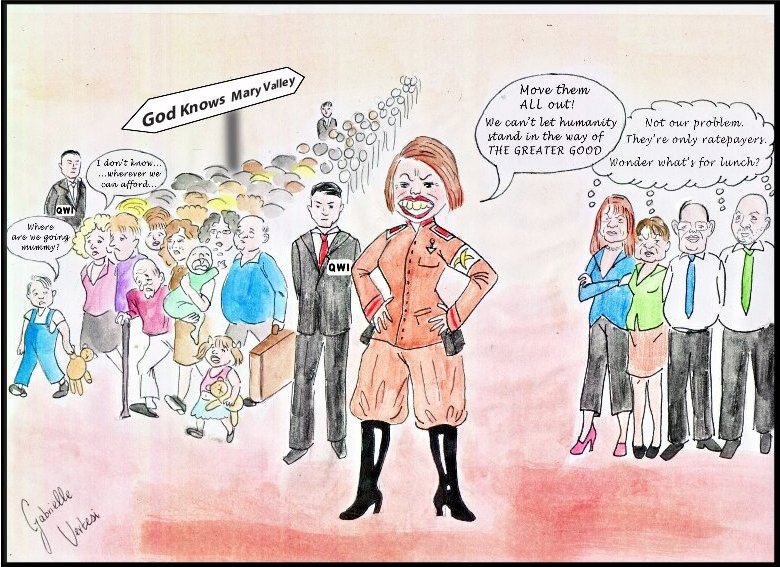 Obviously this varies, but some are clear stinkers, not least our infamous dam.
Obviously this varies, but some are clear stinkers, not least our infamous dam. Kenya has recently approved plans to destroy some 20,000 hectares of the globally important and ecologically sensitive Tana Delta for sugar and biofuel production. Covering 130,000 hectares, these wetlands' diverse riverine vegetation -- forests, swamps, dunes, beaches and ocean -- will be forever altered by widespread vast fields of toxic, monoculture sugar cane and biofuel mill. The project threatens 350 species including birds, lions, hippos, nesting turtles, elephants, sharks, reptiles and the Tana red colobus, one of 25 primates facing extinction globally.
Kenya has recently approved plans to destroy some 20,000 hectares of the globally important and ecologically sensitive Tana Delta for sugar and biofuel production. Covering 130,000 hectares, these wetlands' diverse riverine vegetation -- forests, swamps, dunes, beaches and ocean -- will be forever altered by widespread vast fields of toxic, monoculture sugar cane and biofuel mill. The project threatens 350 species including birds, lions, hippos, nesting turtles, elephants, sharks, reptiles and the Tana red colobus, one of 25 primates facing extinction globally.
Recent comments